
Chemosphere
Scope & Guideline
Empowering researchers to tackle pressing environmental issues.
Introduction
Aims and Scopes
- Environmental Chemistry:
Research focused on the chemical composition, reactions, and transport of pollutants in various ecosystems, including water, soil, and air. - Biodegradation and Bioremediation:
Studies addressing the biological processes that degrade contaminants, including the use of microorganisms and plants to remediate polluted environments. - Toxicology and Ecotoxicology:
Research exploring the toxic effects of chemicals on living organisms, including pathways, mechanisms, and the assessment of risks associated with exposure to pollutants. - Advanced Oxidation Processes:
Investigations into novel techniques for the degradation of organic pollutants using advanced oxidation methods, including photocatalysis and electrochemical processes. - Material Science and Nanotechnology:
Studies on the synthesis and application of nanomaterials and composites for environmental remediation and pollutant detection. - Sustainable Practices:
Research promoting sustainable approaches to waste management, pollution reduction, and resource recovery in various environmental contexts.
Trending and Emerging
- Microplastics and Nanoplastics:
An increasing number of studies are dedicated to the environmental impact, toxicity, and degradation of microplastics and nanoplastics, reflecting global concerns over plastic pollution. - Emerging Contaminants:
Research on pharmaceuticals, personal care products, and other novel contaminants is gaining momentum, highlighting their environmental presence and the need for effective removal strategies. - Machine Learning and Data Science Applications:
The integration of machine learning and data-driven approaches in environmental research is trending, providing new insights into pollutant behavior and remediation strategies. - Biotechnological Innovations:
There is a growing emphasis on biotechnological solutions for pollution mitigation, including the use of genetically engineered microorganisms and bioinspired materials. - Ecological Risk Assessment:
Emerging themes in assessing the ecological risks posed by complex chemical mixtures and their interactions with environmental factors are becoming more prominent.
Declining or Waning
- Traditional Pollutant Studies:
Research focusing on legacy pollutants such as heavy metals and persistent organic pollutants (POPs) is becoming less prominent, as the journal shifts to address emerging contaminants and novel pollutants. - General Chemical Analysis:
Papers that solely report on the chemical analysis of environmental samples without exploring the broader implications or remediation strategies are less frequently published. - Single-Chemical Toxicity Assessments:
Studies that evaluate the toxic effects of individual chemicals are being replaced by more complex studies that consider mixtures and interactions of multiple contaminants.
Similar Journals

Chemistry & Chemical Technology
Advancing the Frontiers of Chemical InnovationChemistry & Chemical Technology is an esteemed academic journal published by LVIV POLYTECH NATL UNIV, specializing in the interdisciplinary intersections of chemistry and engineering. With its ISSN 1996-4196, this journal has become a significant platform, contributing to advancements and discussions within the fields of Chemical Engineering and Chemistry, as evidenced by its rankings in the 2023 category quartiles, where it is placed in Q3 for both disciplines. The journal aims to disseminate high-quality research articles, studies, and reviews from 2012 to 2024, welcoming contributions from researchers and professionals keen on driving innovation and fostering collaboration in the chemical sciences. As an open-access journal based in Ukraine, it has established a reputation for accessibility, providing comprehensive insights and a global perspective on the latest developments. Engaging with this journal not only enhances your understanding of current trends but also contributes to the global body of knowledge in chemical technology.
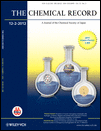
CHEMICAL RECORD
Pioneering Discoveries in Chemistry and BiochemistryThe Chemical Record is a prestigious peer-reviewed journal published by WILEY-V C H VERLAG GMBH, focusing on innovative research and developments across the diverse and evolving fields of chemistry and biochemistry. With an esteemed 2023 Impact Factor and recognized as a Q1 journal in several categories—including Biochemistry, Chemical Engineering, and Materials Chemistry—The Chemical Record stands as a critical resource for researchers, professionals, and students aiming to disseminate and acquire knowledge in these disciplines. The journal's engaging scope covers contemporary topics and fosters collaboration within the global scientific community, ensuring accessibility to cutting-edge research. By publishing articles that meet the highest standards of scholarship, it has earned a significant place within the academic ecosystem, as reflected in its strong Scopus rankings. Although The Chemical Record operates without open access, it remains deeply committed to advancing the field of chemistry through rigorous and impactful publications that bridge gaps between theory and practice.
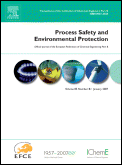
PROCESS SAFETY AND ENVIRONMENTAL PROTECTION
Fostering interdisciplinary solutions for a sustainable future.PROCESS SAFETY AND ENVIRONMENTAL PROTECTION, published by Elsevier, is a premier academic journal dedicated to advancing the fields of chemical engineering, environmental science, and safety management. With an impressive impact factor, this esteemed journal undergoes a meticulous peer-review process and serves as a vital platform for researchers, professionals, and students seeking to disseminate cutting-edge research and innovative practices. Submissions are welcome in a wide scope of topics related to safety, risk, reliability, and environmental engineering, demonstrating its influence as a Q1 journal across multiple categories, including Environmental Chemistry and Safety, Risk, Reliability and Quality. By providing a rigorous analysis of current challenges and solutions in the domain since its inception in 1990, it continues to foster interdisciplinary collaboration and practical applications in the United Kingdom and beyond. With the journal not currently offering Open Access options, subscribers gain exclusive access to pivotal insights that shape industry standards and drive advancements in sustainable practices.
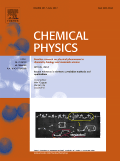
CHEMICAL PHYSICS
Illuminating the Path of Chemical Knowledge Since 1973.CHEMICAL PHYSICS is a premier international journal published by Elsevier, dedicated to advancing the field of theoretical and experimental chemistry, particularly within the physical domain. Since its inception in 1973, this journal has served as a platform for disseminating cutting-edge research, fostering collaboration among researchers and professionals in the community. With a notable impact factor and recognized in the Scopus rankings, CHEMICAL PHYSICS holds esteemed positions in two categories: Q3 in Physical and Theoretical Chemistry and Q2 in Physics and Astronomy (miscellaneous). Published in the Netherlands, the journal features high-quality articles that cover a broad spectrum of topics, aiming to deepen understanding of chemical phenomena through innovative approaches. Although open access options are not currently available, the journal remains invaluable for researchers, students, and professionals seeking to stay informed about the latest developments in chemical physics. With convergence years extending from 1973 to 2025, CHEMICAL PHYSICS continues to be a significant contributor to the academic discourse in its field.

Izvestiya Vuzov-Prikladnaya Khimiya i Biotekhnologiya
Exploring the Intersection of Theory and PracticeIzvestiya Vuzov-Prikladnaya Khimiya i Biotekhnologiya, published by Irkutsk National Research Technical University, is a prominent open-access journal dedicated to advancing the fields of applied chemistry and biotechnology. Since its inception in 2011, this journal has provided a platform for the dissemination of significant research findings, innovative techniques, and technological advancements that bridge the gap between theoretical frameworks and practical applications. The journal is indexed in various databases, ensuring that published works reach a global audience of researchers, professionals, and students eager to explore the latest developments in these critical disciplines. With its commitment to open-access publishing, Izvestiya Vuzov-Prikladnaya Khimiya i Biotekhnologiya plays a vital role in fostering collaboration and knowledge sharing within the scientific community, thus contributing to the advancement of both fields in a rapidly evolving technological landscape.

Journal of Hazardous Materials Letters
Transforming research into action for hazardous materials management.Journal of Hazardous Materials Letters, published by ELSEVIER, is a premier open access journal that has rapidly gained prominence in the fields of Environmental Chemistry, Environmental Engineering, Health, Toxicology and Mutagenesis, Pollution, and Waste Management and Disposal since its inception in 2020. With an impressive categorization in the top quartile (Q1) across all its relevant disciplines in 2023, this journal ranks favorably within the Scopus database, positioning itself in the upper echelons of Environmental Science—ranked 23rd in Environmental Engineering and 19th in Health, Toxicology and Mutagenesis among its peers. It serves as a vital platform for the dissemination of high-quality research focused on addressing hazardous materials and their impacts on health and the environment. The journal's commitment to open access facilitates immediate and broad dissemination of research findings, ensuring that essential knowledge reaches a global audience of researchers, professionals, and students eager to advance the field. With its ongoing convergence into 2024, the Journal of Hazardous Materials Letters continues to drive innovation and influence practice in managing hazardous materials for a sustainable future.

JOURNAL OF THE CHEMICAL SOCIETY OF PAKISTAN
Pioneering Research for Tomorrow’s Chemical Challenges.JOURNAL OF THE CHEMICAL SOCIETY OF PAKISTAN is a premier academic journal published by the Chemical Society of Pakistan, focusing on advancing the field of chemistry through rigorous research and scholarship. Established in 1996, this journal aims to disseminate high-quality research articles, reviews, and insights pertaining to various subfields of chemistry, making substantial contributions to both local and international scientific communities. With a current impact factor placing it in the Q4 category, the journal continues to foster discussions on emerging trends and innovations within the discipline. Additionally, it holds a Scopus rank of #305 out of 408, highlighting its growing influence despite being positioned in the 25th percentile. Although it is not an open-access journal, it provides a crucial platform for researchers and professionals in Pakistan and worldwide. The JOURNAL OF THE CHEMICAL SOCIETY OF PAKISTAN serves as a valuable resource for students, educators, and industry professionals alike, facilitating the exchange of knowledge and promoting advancements in chemical sciences.

ENVIRONMENTAL ENGINEERING SCIENCE
Empowering research that shapes environmental practices.ENVIRONMENTAL ENGINEERING SCIENCE is a leading journal published by MARY ANN LIEBERT, INC that provides a platform for pioneering research in the fields of environmental chemistry, pollution control, and waste management. With an ISSN of 1092-8758 and an E-ISSN of 1557-9018, this peer-reviewed journal aims to disseminate high-quality scientific studies that address critical environmental challenges. As evidenced by its 2023 category quartile rankings, it holds a notable position at Q3 in Environmental Chemistry and Pollution and Q2 in Waste Management and Disposal, highlighting its relevance and impact in these domains. Spanning over two decades from 1997 to 2024, the journal is dedicated to fostering innovations and promoting rigorous scholarship that can contribute significantly to sustainable environmental practices globally. Authors and researchers are encouraged to engage with this essential resource, which offers Open Access options to enhance the visibility and reach of their work. For those interested in advancing their understanding and practice within the environmental sciences, ENVIRONMENTAL ENGINEERING SCIENCE is an indispensable journal to consider.
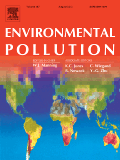
ENVIRONMENTAL POLLUTION
Advancing knowledge on pollution's impact and mitigation.Environmental Pollution, published by Elsevier Science Ltd, stands at the forefront of research related to environmental contaminants and their effects on health and ecosystems. With an impressive impact factor reflected in its Q1 rankings across various categories including Health, Toxicology, and Pollution, this journal is a pivotal resource for academics and professionals in the fields of environmental science and toxicology. The journal, established in 1973, continues to disseminate high-quality articles that explore the implications of pollution and advance knowledge on toxicological impacts and mitigation strategies. Although it is not an open-access journal, it offers robust visibility within the scientific community, ensuring vital research reaches those who need it most. Researchers, students, and professionals dedicated to understanding and addressing the challenges of environmental pollution will find Environmental Pollution to be an indispensable platform for their work, guiding the ongoing dialogue on sustainable practices and public health protection.
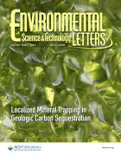
Environmental Science & Technology Letters
Advancing knowledge for a sustainable future.Environmental Science & Technology Letters, published by the American Chemical Society, stands as a premier journal in the realm of environmental science and technology, focusing on pivotal studies that address pressing environmental challenges. With an impressive Q1 ranking in multiple categories including Ecology, Environmental Chemistry, and Pollution, this journal maintains a position of excellence within its field, achieving Scopus ranks that place it in the top percentile of Environmental Science disciplines. Although not open access, Environmental Science & Technology Letters offers vital insights and cutting-edge research that contribute significantly to the understanding and management of environmental issues. The journal’s objectives include disseminating ground-breaking findings and promoting discussions that lead to sustainable solutions. With convergence from 2013 to 2024, it continues to serve as an essential resource for researchers, professionals, and students committed to advancing knowledge and innovation in environmental science.